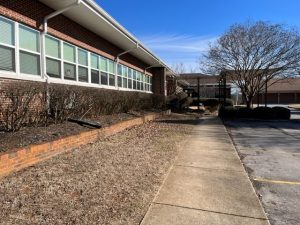Introduction – Setting the Stage
Introduction

Setting the Stage
It is 9:30am on a Tuesday morning at Sandy Hills Elementary school, and the fire alarm goes off; the students in Mrs. Wallace’s 2nd grade class quickly stand up and push their chairs under the desk (as she always makes them do). The line leader then leads the class into the hallway as Mrs. Wallace checks to make sure all of the students have left the classroom and closes the door and follows her class down the hall and out the door onto the playground where they line up with all of the other classes and students. Mrs. Wallace gives the principal, Mrs. Richards a thumbs up indicating that all of her students are accounted for as do all of the other teachers. The entire fire drill takes about 45 seconds and is executed with the precision worthy of a military drill team. Needless to say, Mrs. Richards is very pleased with the performance of her students and staff. She knows that they will be safe in the event of an actual emergency. But will they really? What if the emergency is not a fire but something else entirely? Fire drills do work – so, even though there are an estimated 5,500 school fires that occur yearly according to the U.S. Fire Administration/National Fire Data Center, fatalities are exceedingly rare. However, such drills may not adequately prepare students and staff for all types of school emergencies. When an emergency is not a fire, the school may not have a drill for it.
A school age child is much more likely to die in a car crash or an unintended firearms accident at home than they are as a victim of an active shooter at their school. With just over 130,000 K-12 schools in the United States (NCES, 2022) serving over 57 million students each day (USCB, 2019), schools in the United States are mostly safe places free from violence and danger where growth, knowledge, and learning happen. Although beginning in 2020, firearms related incidents surpassed motor vehicle crashes as the leading cause of death for children in the US (Cunningham, R., Walton, M., and Carter, P., 2018) (Goldstick, J., Cunningham, R., Carter, P., 2022), in both cases these deaths are much more likely to occur or be caused in the in the home or other family setting than at school (NIH, 2003).
According to the most recent data available from the National Center for Education Statistics in academic year 2018/19 there were 39 school-associated violent deaths including both students and affiliated adults. Of this 39, 29 were homicides and 10 were suicides as compared to “a total of 1,508 youth homicides and 2,233 youth suicides which occurred in the United States, including those both at school and away from school” (NCES, 2022). However, all too often as we see in the media in real time, situations and incidents do occur which serve to remind us that safety and security in the school environment are not always foregone conclusions and bad things do and likely will happen to even the most conscientious and well-prepared school.
So, although relatively rare as outlined, with less than 3 percent of youth homicides and less than 1 percent of youth suicides occurring at school, school shootings are a uniquely US problem that is increasingly concerning as both their frequency and lethality have been increasing over time. (NCES, 2022). Since 1970 in the US there have been 2052 school shootings that have left 661 people dead – 2021 was by far the worst year on record with 249 incidents and just this year thus far in 2022 (as of July) the US has experienced 153 school shooting incidents. (CHDS, 2022) The deadliest year in terms of casualties was 2018 with 51 people killed. (Campus Safety, 2022) Interestingly, the US based incidents of just one of these years alone outnumbers the combined total of school shooting incidents of the next top 19 countries for the past 10 years. (WPR, 2022) “According to data from Everytown Research, the United States averaged just over 87 school shootings each year from 2013 to 2021, resulting in an annual average of 28.4 dead and 59.6 wounded.” (WPR, 2022)
Since the Columbine High school shooting in 1999, school safety and security planning and police and first responder response has greatly improved, but as we see from the statistics – that has not solved the problem as these incidents continue to happen. Even the most prepared and well-resourced school that has done everything correctly in terms of safety and security, can still face a school shooting incident or other crisis given the right set of circumstances and find itself forced to respond and deal with the aftermath of the incident. Even with the most effective and professional law enforcement and first responder reaction, time can be a critical factor in who lives and who does not during a school shooting or other school based incident. According to the National Sheriff’s Association, “The average school shooting lasts 12.5 minutes, while the average police response time is 18 minutes.” (NSA, 2023) During that critical gap in time is where faculty and staff preparation, training, and response can make the key difference in survival. Obviously, given the history of school shooting incidents over the past 25 years, faculty, staff, and students are intimately familiar with active shooter training and lock down drills, but what happens if it is not a shooting but some other calamity, are we ready and prepared for that? How do we know if we are? How do we know if what we have done is effective and is it enough? Finding the answers to these kinds of questions is what this guide seeks to help with.

